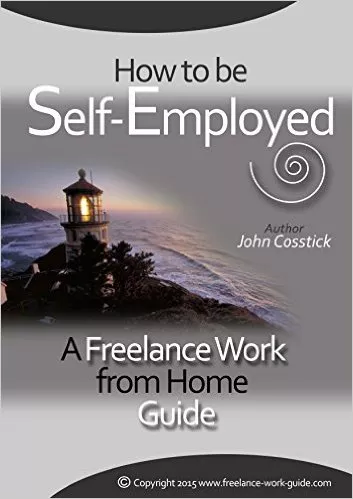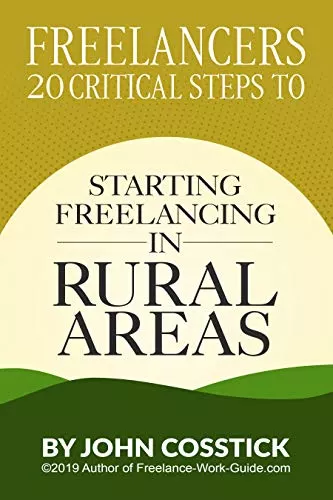On 21 November 2024 the Australian Albanese Government issued a media release entitled “Albanese Government delivers world-leading legislation to protect children online”. You can read the media release HERE.
This article looks at the relevant legislation and takes snapshots of other countries’ developments.
Australia’s government has introduced the Online Safety Amendment (Social Media Minimum Age) Bill 2024, a pioneering piece of legislation designed to protect the nation’s youth by prohibiting individuals under 16 from accessing popular social media platforms such as Facebook, Instagram, Reddit, TikTok, X and Snapchat.

This bold move targets critical issues associated with adolescent social media use, including cyberbullying, mental health challenges, and exposure to harmful or age-inappropriate content, with the overarching goal of fostering a safer digital environment for young Australians.
The legislation underscores growing global concerns about the effects of the digital landscape on young people. While platforms like TikTok and Snapchat have transformed social interaction, they have also been linked to rising rates of harassment, screen addiction, and mental health struggles.
For parents, educators, and policymakers, this law represents both an intervention and an opportunity to rethink children’s engagement with technology. However, the shift raises significant questions: How will this impact adolescents’ social lives, What measures can be taken to ensure that young people adapt positively during this transition?
This article provides an in-depth exploration of the impacts of Australia’s social media ban for under-16s, analysing its implications for mental health, cyberbullying, and online gaming. It also offers practical solutions for parents and educational institutions to help children navigate a safer digital world while promoting resilience, creativity, and balance in their online interactions.
Historical Context and Legislative Background
Australia has consistently evolved its approach to online safety over the past decade, reflecting growing awareness of the risks posed by social media, misinformation, and digital exploitation. The enactment of the Online Safety Amendment (Social Media Minimum Age) Bill 2024 represents a watershed moment in this journey, setting new benchmarks for safeguarding young users.
Early Regulatory Efforts
In the early 2010s, Australia relied on existing legal frameworks, such as defamation and consumer protection laws, to address challenges in the digital space. However, the explosive growth of social media platforms like Facebook and Instagram exposed critical gaps in these traditional structures.
The limitations of these measures spurred policymakers to seek specialized solutions for the online safety of minors.
Establishment of the eSafety Commissioner (2015)
Recognizing the need for dedicated oversight, the Australian government launched the Office of the eSafety Commissioner in 2015. This office became a cornerstone of national online safety efforts, equipped with the authority to:
- Promote online safety education programs.
- Investigate complaints of cyberbullying, especially involving minors.
- Mandate the removal of harmful online content.
Julie Inman Grant, the current eSafety Commissioner, notes:
“This [safety by design] is putting the responsibility back. It’s having companies from the leadership, from the top down, prioritize safety, build it in at the frontend and now we have the basic online safety expectations.” Interview at alltechishuman.org, 20/5/24, Interview by Matt Nguyen at the Tony Blair Institute”
Introduction of the Online Safety Act (2021)
Building on earlier efforts, the Online Safety Act 2021 provided a more robust framework for combating digital risks. Key provisions included:
- Expanding the powers of the eSafety Commissioner to tackle harmful online content swiftly.
- Setting clear expectations for social media platforms to protect users from exploitation and abuse.
The act was a significant step forward, yet rising incidents of cyberbullying and adolescent mental health challenges highlighted the need for more targeted measures.
Catalysts for the 2024 Amendment
Despite progress, the growing prevalence of cyberbullying, exposure to inappropriate content, and social media-related mental health issues among adolescents revealed gaps in existing regulations.
One pivotal moment came from the “Let Them Be Kids” campaign, led by News Corp Australia. This grassroots movement rallied public and political support for stricter online safety measures.
Passage of the 2024 Legislation
In response to mounting public pressure, the government introduced the Online Safety Amendment (Social Media Minimum Age) Bill 2024. Key highlights include:
- Prohibiting individuals under 16 from creating accounts on major social media platforms like Facebook, Reddit, Instagram, TikTok, X and Snapchat.
- Exempting platforms serving educational or health purposes (e.g., YouTube Kids, Google Classroom).
- Imposing penalties of up to AUD 50 million for non-compliance.
After rigorous debate and consultations, the bill passed both houses of Parliament in November 2024, with enforcement slated for late 2025.
International Comparisons
Australia’s decisive action sets it apart from global standards:
- European Union (EU): The General Data Protection Regulation (GDPR) establishes a digital age of consent at 16 but allows member states to lower it to 13.
- United States (US): The Children’s Online Privacy Protection Act (COPPA) restricts data collection from children under 13.
Authoritative Resources:
“Australia Passes ‘World-Leading’ Social Media Ban for Kids Under 16 — with an Aim to Protect Their Mental and Physical Health” – Bailey Richards, People.com 28/11/2024.
“Australia is banning social media for people under 16. Could this work elsewhere — or even there?” –Barbara Ortutay, apnews.com 5/12/2024
Book: Reset Your Child’s Brain: A Four-Week Plan to End Meltdowns, Raise Grades, and Boost Social Skills by Reversing the Effects of Electronic Screen-Time–by Victoria L. Dunckley MD
VideoABC News:
“Australia passes world -first laws banning social media for kids”
Key Takeaway
By examining the historical evolution of online safety laws and the catalysts behind this groundbreaking amendment, Australia’s stringent measures are rooted in a decade-long commitment to protecting young digital users. As the legislation comes into effect, its success will hinge on continued collaboration among policymakers, educators, and parents to navigate its complexities.
Key Provisions of the Online Safety Amendment (Social Media Minimum Age) Bill 2024
The Online Safety Amendment (Social Media Minimum Age) Bill 2024 introduces transformative measures aimed at creating a safer digital environment for young Australians. These provisions represent a significant step in addressing the challenges posed by social media use among minors.
Age Restriction
The legislation explicitly prohibits individuals under the age of 16 from creating or maintaining accounts on major social media platforms, including Facebook, Instagram, TikTok, Snapchat, Reddit, and X (formerly Twitter). The bill requires platforms to prevent under -16s from creating accounts, as outlined in the explanatory memorandum
Purpose and Implications
- Protecting Vulnerable Users: This restriction aims to mitigate exposure to risks such as cyberbullying, harmful content, and social comparison pressures.
- Shaping a Safer Digital Ecosystem: By targeting this age group, the legislation seeks to reduce the negative psychological and social impacts associated with premature social media use.
Platform Responsibilities
Social media platforms are mandated to implement robust age verification systems to enforce the restrictions effectively. These systems must reflect the principles of privacy and accountability.
Compliance Requirements:
- Reasonable Steps: Platforms must take all necessary measures to ensure underage users cannot access their services. This includes leveraging AI and other technologies for accurate age verification.
- Transparency: Platforms are expected to document and report their compliance efforts to regulatory authorities.
Exemptions
The legislation exempts platforms that serve educational or health-related purposes, such as YouTube, WhatsApp, Google Classroom, Headspace, and Kids Helpline.
Rationale for Exemptions
- Supporting Youth Development: Platforms like Google Classroom provide essential tools for education, while Headspace offers mental health resources.
- Balancing Restrictions with Access: These exemptions recognize the positive role that certain digital platforms play in empowering young people.
Enforcement Mechanisms and Penalties
The law incorporates strict enforcement measures to ensure compliance and accountability among social media companies.
Compliance Timeline:
Social media platforms are granted a one-year period to develop and implement the necessary systems for enforcing age restrictions. This grace period acknowledges the complexity of integrating such measures into global platforms.
Penalties for Non-Compliance:
Platforms that fail to comply face penalties of up to AUD 50 million, underscoring the government’s commitment to upholding the legislation.
Privacy Considerations:
To address concerns about user data:
- No Government-Issued ID Required: Age verification processes must prioritize privacy, avoiding reliance on sensitive personal information.
- Innovative Solutions Encouraged: Companies are urged to explore privacy-preserving technologies like AI-powered verification systems.
Implementation Challenges
Despite its merits, implementing the legislation presents several challenges that require thoughtful solutions.
1. Age Verification: Developing age verification methods that are both accurate and privacy-preserving is a major hurdle.
- Platforms must ensure that their systems effectively distinguish minors without intruding on user privacy.
- AI-based verification methods, such as facial recognition, are promising but require rigorous ethical oversight.
2. Global Platform Compliance: Most social media platforms operate globally, making it complex to enforce country-specific regulations.
- Coordinating compliance across jurisdictions with differing legal frameworks adds logistical challenges.
- Collaboration between governments and tech companies is essential for successful implementation.
3. Potential Workarounds: Tech-savvy minors may attempt to bypass age restrictions using methods like:
- False account information.
- Virtual private networks (VPNs) to mask location or identity.
Proposed Solution: Regular audits and ongoing system improvements are critical to closing loopholes and ensuring the law’s effectiveness.
Authoritative Resources:
For deeper insights into the legislation and its implications, consult these resources:
Articles:
“Australia’s social media ban for children under 16 just became law. How it will work remains a mystery,” ABC News article by Lisa M Given 29/11/2024
“Australia approves social media ban on under – 16s”, BBC News article by Hannah Ritchie 29/11/2024
Book:
Reset Your Child’s Brain: A Four-Week Plan to End Meltdowns, Raise Grades, and Boost Social Skills by Reversing the Effects of Electronic Screen-Time
– by Anya Kamenetz (Click HERE to read preview)
Recommended Video:
“Australia Bans Social Media for Children. Will it Help? | Vantage with Palki Sharma
Conclusion
The provisions outlined in the Online Safety Amendment (Social Media Minimum Age) Bill 2024 signal a change in basic assumptions in Australia’s approach to online safety. By balancing strict enforcement with privacy considerations and meaningful exemptions, the legislation demonstrates a thoughtful and detailed understanding of the complexities involved in ensuring digital safety.
For parents, educators, and policymakers, navigating this new regulatory landscape requires ongoing collaboration and a commitment to protecting Australia’s youth.
Impact on Cyberbullying and Online Harassment
Cyberbullying and online harassment are long-standing issues that disproportionately affect adolescents. Social media’s unique combination of anonymity, immediacy, and wide reach amplifies harmful behaviours, leaving young users particularly vulnerable.
The Online Safety Amendment (Social Media Minimum Age) Bill 2024 seeks to reduce these risks by restricting access to major social platforms for individuals under 16. This section critically examines the legislation’s potential effects on cyberbullying dynamics, incorporating expert insights and evidence-based recommendations.
The Australian eSafety Commissioner has produced The eSafety Guide on Cyberbullying which can be read HERE.
This is an international problem and both tech companies and other countries’ have produced resources to help parents and victims deal with the problem. Here are some examples:
United States:
The Department of Homeland Security (DHS) launched the “Know2Protect” campaign, focusing on educating children, teens, parents, and policymakers about online child sexual exploitation and abuse. The campaign includes resources and educational materials to help parents protect their children online.
More information can be found on the Know2Protect website. Assistance is available on the KnowtoProtect website HERE.
United Kingdom
The UK Council for Child Internet Safety (UKCCIS) produced a guide for parents on social media, offering practical tips about the use of safety and privacy features on apps and platforms. This guide aims to help families begin conversations about online safety.
The guide is available on the UK Government website HERE.
Google Safety Centre – Online Safety for Children and Families
Google offers comprehensive resources to assist parents in managing their children’s online safety. The Google Safety Center provides tools and guidance to help families establish healthy digital habits. One of the key initiatives is Be Internet Awesome, a program designed to teach children the fundamentals of digital citizenship and safety.
This program includes a family guide with activities and tips to facilitate family discussions about online behaviour and security. The Family Guide is available HERE.
Additionally, Google offers Family Link, an app that enables parents to set digital ground rules by managing apps, monitoring screen time, and setting device bedtimes for their children’s devices. More information about Family Link can be found here.
These resources are part of Google’s commitment to empowering families to navigate the online world safely and responsibly.
Reducing Cyberbullying Through Restricted Access
A Common Battleground
Social media platforms like Instagram and Snapchat are hotspots for cyberbullying, providing fertile ground for harmful behaviors such as harassment and exclusion. Research from the Australian Institute of Family Studies reveals that over 20% of Australian adolescents report experiencing cyberbullying. These platforms often enable bullying due to features like anonymous posting and the rapid dissemination of harmful content.
There is an interesting article entitled “Looking-glass self” on Wikipedia about the role of individuals on social media and the “cyber self” which can be read here. This is important because it explains how and why online behavior of an individual can differ from their normal behaviour.
Potential Benefits of the Ban
The legislation offers several potential advantages:
Reduced Exposure: Restricting access to social media for those under 16 could prevent many adolescents from becoming targets or perpetrators of bullying. According to a fact sheet by the eSafety Commissioner, cyberbullying affects a significant percentage of Australian youth.
A Safer Digital Landscape: By removing younger users from platforms prone to harassment, the law aims to alleviate the mental health toll of cyberbullying, including anxiety, depression, and low self-esteem.
Case Study: In South Korea, a government initiative requiring stricter monitoring of social media usage among minors led to a 15% decrease in reported online bullying incidents within the first year of implementation. Similar trends could be anticipated in Australia under the new legislation.
A Shift to Other Platforms
Despite these benefits, critics warn of unintended consequences:
Migration to Less-Regulated Spaces: Adolescents may gravitate toward alternative digital spaces, such as private messaging apps or online gaming platforms, which lack similar oversight.
New Vulnerabilities: These platforms may expose young users to risks such as predatory behaviour, unmoderated interactions, and harmful content.

Online Harassment Beyond Social Media
Gaming Platforms as the New Frontier
Online gaming, with its built-in chat functions and social features, has become a significant venue for harassment. A 2023 study published in the Journal of Adolescent Health found that 37% of teenagers experienced harassment on gaming platforms such as Roblox and Fortnite.
“Hate is No Game: Hate and Harassment in Online Games 2023” Article by Centre for Technology and Society published on ADL.org 2/6/24
Parental and Educational Vigilance
- Role of Parents: Parents must remain proactive in monitoring their children’s digital behaviour, even on platforms not traditionally associated with social media.
- Digital Literacy in Schools: Educators can equip students with the skills needed to navigate these environments safely, fostering resilience and respectful interactions.
Challenges in Addressing Cyberbullying
Persistence of Cyberbullying Behaviour
Restricting platform access addresses the symptoms of cyberbullying but not its root causes, such as peer pressure, lack of empathy, and unchecked aggression. Without targeted interventions, these behaviours may persist in other forms or settings.
Role of Digital Literacy
Promoting digital literacy is critical for long-term solutions. Teaching children to recognize harmful behaviour, respond appropriately, and understand the consequences of their actions can foster a culture of respect online.
Successful Initiative:
The Be Internet Awesome program by Google, implemented in schools worldwide, has significantly improved students’ awareness of cyberbullying and responsible online behaviour.
Future Directions
Encouraging Positive Online Communities
Social media platforms, schools, and parents must collaborate to create safer, moderated digital spaces. Examples include:
Expanding Exempt Platforms: Leveraging educational apps and forums with strong moderation policies.
Incorporating Peer-Led Initiatives: Programs where older teens mentor younger ones about positive digital behaviors.
Ongoing Evaluation
Regular assessments are essential to measure the law’s impact. This includes tracking cyberbullying incidents, understanding patterns of platform migration, and identifying new risks.
Authoritative Resources:
Articles:
Understanding Cyberbullying Headspace.org.au article 12/10/2023.
Cyberbullying in Australia: Statistics & Resources Edith Cowan University article 25/5/2023
Book: Bullying and Cyberbullying, Second Edition: What Every Educator and Parent Needs to Know Elizabeth Kandel Englander
Recommended Video:
“Effects of cyberbullying”
Key Takeaway
While the Online Safety Amendment (Social Media Minimum Age) Bill 2024 represents a critical step in protecting young users from cyberbullying, its success hinges on a comprehensive approach. Parents, educators, and policymakers must work collaboratively to address the root causes of online harassment, foster digital literacy, and build a culture of kindness and respect in all digital spaces.
Mental Health Considerations
Social media has a profound impact on the mental health of adolescents. While these platforms offer opportunities for connection and creativity, they also expose young users to risks such as social comparison, cyberbullying, and screen addiction. The Online Safety Amendment (Social Media Minimum Age) Bill 2024 aims to mitigate these risks by restricting access for individuals under 16. This section examines the potential mental health outcomes of the legislation, both positive and negative, supported by expert insights and actionable strategies for parents and educators.
Potential Positive Impacts
1. Reduced Exposure to Harmful Content: Social media algorithms frequently promote unrealistic beauty standards, misinformation, and divisive content. Research by the American Psychological Association (APA) highlights that exposure to such content correlates with increased rates of anxiety, depression, and low self-esteem in adolescents. By limiting access, this legislation can function as a preventive measure, reducing the mental health burden associated with social media.
2. Encouraging Offline Interactions: Offline relationships and hobbies are vital for emotional and social development. The Australian Child Health Poll reports that excessive screen time reduces face-to-face interactions among teens. By curbing social media use, adolescents may naturally engage more with family, friends, and offline activities.
3. Less Social Comparison: A 2023 study published in the Journal of Adolescent Psychology found that 70% of teens report negative self-image due to social comparison on platforms like Instagram. The legislation’s restrictions could ease these feelings of inadequacy, contributing to healthier self-esteem and reduced social anxiety.
Potential Challenges
1. Loss of Support Networks: For some adolescents, social media is a lifeline, providing access to supportive communities for mental health, LGBTQ+ issues, or rare health conditions. The absence of alternative support mechanisms might inadvertently isolate vulnerable individuals. Experts like Dr. Jean Twenge, author of iGen, emphasize the importance of finding offline or moderated alternatives.
2. Migration to Riskier Platforms: Adolescents may bypass the restrictions by using VPNs or joining less-regulated platforms. According to CyberSafe Kids Australia, the risk of encountering unsafe content or predatory behaviour increases in such environments. Effective parental monitoring and guidance are essential to mitigate this risk.
3. Emotional Impact of Restrictions: Adolescents may feel the ban is punitive, leading to frustration or exclusion from peer activities. Schools and parents must provide reassurance and structured alternatives to help them cope with these feelings constructively.
Supporting Mental Health During the Transition
- Open Conversations: Parents and educators should initiate ongoing discussions about the law’s rationale, emphasizing its intent to protect mental well-being. Studies by the National Mental Health Commission (Australia) suggest that active listening builds trust and encourages teens to express their concerns.
- Promoting Digital Literacy: Equip adolescents with the skills to navigate the digital world responsibly. Programs like eSafety Education teach young people how to identify harmful content, manage their screen time, and foster positive online behaviours.
- Fostering Offline Activities: Encouraging hobbies, team sports, or artistic pursuits can help fill the void left by reduced screen time. Research published by Beyond Blue Australia demonstrates that offline engagement significantly enhances self-esteem and creativity.
Mental Health Resources for Parents and Educators
1. Mindfulness and Resilience Training: Programs such as Headspace for Kids and school-based workshops on mindfulness can teach adolescents how to manage stress and develop coping strategies.
2. Counselling and Support: Schools and communities should offer easy access to trained mental health professionals. Initiatives like the Kids Helpline provide a vital safety net for young people struggling with emotional challenges. Organizations such as Beyond Blue offer resources to support mental health during this transition.
Authoritative Resources:
Articles:
- How Social Media Affects Your Teen’s Mental Health: A Parent’s Guide,
- Published by YaleMedicine.org on 17/6/24. Written by Kathy Katella.
- Social Media and Mental Health in Children and Teens, ( https://www.hopkinsmedicine.org/health/wellness-and-prevention/social-media-and-mental-health-in-children-and-teenshttps://)
- Published by HopkinsMedicine.org. Written by Carol Vidal, M.D., Ph.D., M.P.H. and Jennifer Katzenstein Ph.D
- Book: Glow Kids: How Screen Addiction Is Hijacking Our Kids—and How to Break the Trance
Written by Dr. Nicholas Kardaras, this book explores the impact of excessive screen time on children’s development.
Recommended Video
Title: “Teens Under Pressure: Mental health and Social Media”
Key Takeaway
The social media ban aims to reduce mental health risks for adolescents by curbing exposure to harmful content and promoting healthier habits. Its success, however, hinges on thoughtful implementation, proactive support from families and educators, and the availability of alternative avenues for connection and creativity. By prioritizing open communication, digital literacy, and offline engagement, we can help young people navigate this transition and thrive in a more balanced digital environment.

Online Gaming: A Parallel Digital Landscape
The Online Safety Amendment (Social Media Minimum Age) Bill 2024 targets social media platforms, but online gaming environments remain an equally significant digital domain for adolescents. Gaming has evolved beyond entertainment, functioning as both a recreational activity and a social outlet.
While these platforms can foster creativity and community, they also present unique risks such as harassment, addiction, and exposure to inappropriate content. This section delves into these challenges and offers actionable guidance for parents and educators to create a safer gaming environment for young users.
The eSafety Commissioner has published a research article entitled The Risks and Benefits of Online Gaming for Children and Young People. It was published in February in 2024 and can be downloaded from their website by clicking HERE.
Gaming as a Social Platform
1. Blurring the Lines: Modern games like Fortnite, Roblox, and Minecraft offer features such as voice chat, friend lists, and in-game messaging, making them hybrid social spaces. According to a report by the Entertainment Software Association, over 70% of young gamers use gaming platforms to stay connected with friends and build relationships.
These features make online gaming an appealing alternative to traditional social media.Research by the Australian Institute of Family Studies explores the impact of gaming on social behaviour.
2. Potential Migration: The legislation restricting social media for under-16s may inadvertently drive adolescents to gaming platforms as substitutes for social interaction. While these platforms can provide positive experiences, they are equally vulnerable to issues like cyberbullying and exploitation by predators.
Experts like Dr. Rachel Kowert, author of A Parent’s Guide to Video Games, emphasize the importance of understanding the dual role of gaming as both a safe space and a potential risk zone.
Risks Associated with Online Gaming
1. Cyberbullying in Gaming: Harassment in gaming environments, particularly in competitive or team-based settings, is a growing concern. Research from the Anti-Defamation League reveals that 60% of gamers under 18 experience harassment, ranging from verbal abuse to targeted attacks based on identity.
2. Screen Time and Addiction: The immersive nature of gaming can lead to excessive screen time, adversely affecting sleep, physical health, and academic performance. The World Health Organization (WHO) classifies gaming addiction as a disorder, underscoring the need for balance in gameplay.
3. Inappropriate Content: Games with user-generated content or unmoderated chat can expose children to inappropriate language, themes, or behaviours. For instance, studies by Internet Matters UK indicate that platforms like Roblox sometimes host unregulated content, requiring vigilance from both parents and platform providers.
Guiding Healthy Gaming Habits
1. Parental Controls and Monitoring: Most gaming platforms provide built-in parental control features, enabling restrictions on chat functions, time limits, and in-game purchases. Tools like Microsoft Family Safety and Nintendo Switch Parental Controls empower parents to create safer gaming environments.
2. Encouraging Balance: Parents and educators should advocate for a balanced approach to gaming. A schedule combining gameplay, family time, outdoor activities, and academic responsibilities can help maintain physical and mental well-being.
3. Teaching Digital Citizenship: Equip children with skills to navigate gaming responsibly. Encourage them to recognize toxic behaviour, report inappropriate interactions, and set boundaries. Programs like CyberSafe Kids Australia provide workshops and resources to teach these critical skills.
Opportunities in Gaming
1. Skill Development: Games can foster critical thinking, teamwork, and problem-solving. For instance, Minecraft encourages creativity and collaboration, while strategy games enhance planning and decision-making skills. Esports tournaments also offer pathways for young gamers to explore competitive careers.
2. Educational Gaming: Platforms like Osmo and Kahoot! seamlessly integrate entertainment with learning, making them ideal alternatives for recreational gaming. These tools can reinforce concepts in math, language arts, and science, offering value beyond traditional gameplay.
Authoritative Resources:
Article:
The risks and benefits of online gaming for children and young people
A comprehensive researched report from the Australian eSafetyCommissioner which can be downloaded.
How to Set Limits on Screen Time
Tips for prioritizing kids’ wellness and keeping fights to a minimum
Offers actionable advice for parents to monitor and limit screen time effectively.
Book: Reset Your Child’s Brain: A Four-Week Plan to End Meltdowns, Raise Grades, and Boost Social Skills by Reversing the Effects of Electronic Screen-Time Dr. Victoria L. Dunckley’s expert guide on managing screen addiction in children.
Recommended Video
Title: Gaming: Healthy Strategies for Kids and Parents
Gaming: Healthy Strategies for Kids and Parents by University of California Television. This video is about how can parents guide their children toward healthier habits in gaming and technology use? Game developer Hilary Lok and digital well-being expert Nadja Streiter explore today’s gaming landscape, highlight early indicators of technology addiction, offer practical guidelines, and provide valuable insights for families.
Key Takeaway
Online gaming is both an opportunity and a challenge for adolescents in a world with restricted social media access. While gaming can foster creativity and build skills, it also requires vigilance to mitigate risks like cyberbullying and overuse.
By promoting digital citizenship, leveraging parental controls, and encouraging balanced habits, families and educators can ensure that gaming remains a positive and enriching experience for young users.

Challenges in Monitoring and Enforcing Internet Use
The Online Safety Amendment (Social Media Minimum Age) Bill 2024 brings a host of new responsibilities for social media companies, parents, and educators. However, implementing and enforcing these restrictions comes with significant challenges.
From technical hurdles in age verification to ethical considerations about privacy, this section explores the complexities of monitoring internet use and suggests solutions to enhance compliance without compromising individual freedoms.
With the forthcoming changes in online safety regulations under the enhanced Online Safety Amendment (Social Media Minimum Age) Bill 2024, the eSafety Commissioner is further empowered to address the evolving landscape of online harms.
These changes include stricter enforcement of compliance for service providers through updated schemes such as the Cyberbullying Scheme and Adult Cyber Abuse Scheme, alongside the introduction of the Basic Online Safety Expectations. These existing measures are designed to proactively mitigate risks like cyberbullying, image-based abuse, and abhorrent violent content.
The new framework emphasizes collaboration with online industries and ensures robust enforcement where necessary to safeguard Australians’ online experiences. For details, refer to the existing regulatory information on the eSafety Regulatory Schemes page by clicking HERE.
Technical Challenges in Age Verification
1. Effectiveness of Current Methods: Age verification technologies often rely on self-reported data, which can be easily falsified by tech-savvy minors. Other methods, such as requiring government-issued identification, raise concerns about accessibility and privacy.
2. Innovative Solutions: Emerging technologies like AI-powered verification and parental consent tools show promise. For instance, some platforms are exploring facial recognition technology to estimate a user’s age without storing sensitive data. However, these solutions must balance accuracy with ethical considerations.
Ethical and Privacy Concerns
Balancing Safety and Privacy: Enforcing age restrictions necessitates monitoring and data collection, which could infringe on privacy rights. Policymakers and tech companies must ensure that measures comply with data protection laws and ethical standards.
Surveillance Risks: Excessive monitoring could lead to a surveillance culture, potentially eroding trust between children, parents, and institutions. Clear communication about the intent and limits of monitoring is essential.
Parental Involvement in Monitoring
Role of Parents as Digital Gatekeepers: Parents play a crucial role in enforcing age restrictions at home. Tools such as parental control apps (e.g., Qustodio and Net Nanny) allow parents to monitor and manage their children’s internet use effectively.
Challenges for Parents: Many parents feel unequipped to manage the technical aspects of monitoring or fear damaging their relationship with their children by imposing strict controls. Educational initiatives targeting parents can help bridge this gap.
Educational Institutions and Internet Safety
Schools as Key Stakeholders: Schools can support the legislation by incorporating digital safety lessons into their curricula, teaching students about responsible online behaviour, and equipping them to recognize risks.
Collaborating with Parents: Regular communication between schools and families can ensure consistent messaging and a unified approach to online safety.
Potential Workarounds and Risks
Use of VPNs and Alternative Platforms: Children may attempt to bypass restrictions using VPNs or migrating to lesser-known platforms. Parents and educators must remain aware of such possibilities and address them proactively.
Risks of Over regulation: Overly strict enforcement could push minors to darker corners of the internet, exposing them to even greater dangers. A balanced, informed approach is critical.
Proposed Solutions
Strengthening Digital Literacy: Educating children about the risks of the online world and empowering them to make informed decisions is a long-term solution that complements technical enforcement measures.
Developing Industry Standards: Governments and tech companies can collaborate to establish universal standards for age verification, ensuring consistency and effectiveness across platforms.
Authoritative Resources
Article:
Ensuring Online Safety: The Challenges And Solutions Of Age Verification For Kids, Forbes Innovation, Rodger Desai, 2/10/2024
Protecting Privacy While Enforcing Online Safety Laws
Book: Raising Humans in a Digital World: Helping Kids Build a Healthy Relationship with Technology
Key Takeaway
The successful implementation of the Online Safety Amendment requires a multifaceted approach, addressing technical, ethical, and social challenges. By leveraging innovative technologies, strengthening digital literacy, and fostering collaboration among stakeholders, Australia can ensure that this legislation achieves its goal of protecting young users while respecting their privacy and rights.

Recommendations for Parents
As the Online Safety Amendment (Social Media Minimum Age) Bill 2024 reshapes the digital landscape for young Australians, parents play a pivotal role in guiding their children through this transition. By fostering open communication, setting boundaries, and modelling healthy online behaviour, parents can help children navigate the challenges and opportunities of the digital world. This section offers actionable strategies for parents to support their children under the new legislation.
Open Communication
Discuss the Legislation: Begin by explaining the intent of the new law and why it has been implemented. Emphasize that the goal is to protect their mental health and well-being, not to punish or restrict them unfairly.
Active Listening: Allow children to express their feelings about the changes. Acknowledge their frustrations and validate their emotions, helping them feel heard and respected.
Address Peer Pressure: Equip children with the confidence to explain the law to their friends and stand firm against peer pressure to bypass restrictions.
Implement Healthy Screen Time Habits
Set Clear Boundaries: Define rules for screen time, such as specific hours for device use and a tech-free zone during family meals or before bedtime.
Model Positive Behaviour: Children learn by example. Show them that adults can also practice healthy digital habits, such as limiting social media use and prioritizing offline interactions.
Encourage Alternative Activities: Promote hobbies, sports, or creative pursuits that engage their interests and reduce reliance on screens for entertainment.
Use Technology Wisely
Parental Control Tools: Utilize apps and settings to monitor and manage your child’s online activity. Popular tools like Bark, Norton Family, and Circle offer features to block inappropriate content, set time limits, and track usage.
Educate About Online Risks: Teaching children how to recognize harmful behaviour, respond appropriately, and understand the consequences of their actions fosters a culture of respect online.
Promote Safe Gaming: If your child shifts to gaming platforms, ensure they understand the importance of respectful interactions and know how to report toxic behaviour.
Build Digital Literacy
Teach Critical Thinking: Help children develop the ability to evaluate online information, recognize misinformation, and make thoughtful decisions about what they share and consume. Programs like Be Connected offer digital literacy training for parents.
Encourage Privacy Awareness: Explain the importance of protecting personal information and using strong passwords to secure their accounts.
Foster a Positive Digital Relationship
Be Involved: Take an interest in your child’s digital life by playing games together, discussing their Favorite online activities, or watching age-appropriate YouTube videos as a family.
Provide Support: Let them know they can come to you with concerns or questions about their online experiences without fear of judgment or punishment.
Authoritative Resources:
Article:
Parenting in a digital age: Managing screen time, UK Safer Internet Centre, Julia Adamson
https://www.nspcc.org.uk/keeping-children-safe/support-for-parents/, Online Safety Guides for Parents
Book The Tech Wise Family: Everyday Steps for Putting Technology in its Proper Place, Andy Crouch
Key Takeaway
Parents are critical allies in ensuring the success of Australia’s social media ban for under-16s. By fostering open communication, promoting digital literacy, and modelling positive online behaviour, parents can empower their children to develop healthy and responsible relationships with technology. These efforts will not only ease the transition under the new law but also set the foundation for lifelong digital well-being.
Recommendations for Educational Institutions
Schools and other educational institutions are key players in implementing the Online Safety Amendment (Social Media Minimum Age) Bill 2024. By integrating digital safety education into their curricula and fostering a supportive environment for students, schools can help bridge the gap between regulation and real-world impact. This section provides actionable recommendations for educators and administrators to support their students under the new legislation.
Incorporate Digital Literacy into the Curriculum
Teaching Online Safety: Designate time within the school curriculum to teach students about online risks, responsible behaviour, and how to report inappropriate content or interactions.
Critical Thinking Skills: Include lessons on evaluating online information, identifying misinformation, and understanding how algorithms influence what they see online.
Emphasize Privacy: Educate students on the importance of protecting personal information, using secure passwords, and managing privacy settings.
Promote Positive Online Behaviour
Fostering Respectful Interactions: Encourage students to treat others with respect both online and offline. Role-play activities and discussions can help reinforce empathy and kindness in digital spaces. The Australian Curriculum includes guidelines for teaching digital citizenship.
Addressing Cyberbullying: Provide students with strategies to recognize, report, and manage cyberbullying incidents. Emphasize that schools are safe spaces where they can seek help if they experience harassment online.
Support Students’ Mental Health
Counselling Services: Offer access to school counsellors who are trained to address the challenges students may face as a result of restricted access to social media or issues related to online interactions.
Encourage Offline Activities: Organize extracurricular activities, such as sports, arts, and clubs, to provide students with opportunities for face-to-face interaction and engagement outside of the digital world.
Partner with Parents
Parental Workshops: Host workshops to educate parents about the legislation, its implications, and how they can support their children in adapting to the changes.
Regular Communication: Keep parents informed about school initiatives related to online safety and share resources they can use at home to reinforce these lessons.
Collaborative Policies: Work with parents to create consistent rules and expectations for digital behaviour across home and school environments.
Leverage Technology for Education
Safe Platforms for Learning: Utilize online tools and platforms that are exempt from the legislation, such as Google Classroom and Edmodo, to enhance learning while maintaining compliance with the law.
Monitoring Software: Implement age-appropriate monitoring tools for school-provided devices to ensure students remain on-task and safe online.
Continuous Professional Development
Training for Educators: Provide teachers and staff with training on online safety, digital literacy, and the challenges posed by the legislation. This ensures they are well-equipped to address students’ concerns and enforce policies effectively.
Staying Informed: Encourage educators to stay updated on emerging online trends and potential risks to better support their students.
Authoritative Resources:
Article:
Best Practice Framework for Online Safety Framework,eSafety Commissioner
Teaching Digital Citizenship in Schools, Commonsense.org
Book: Digital Citizenship in Action, Second Edition: Empowering Students to Engage in Online Communities, Kristen Mattson
Key Takeaway
Educational institutions play a critical role in ensuring that students understand and comply with the new social media restrictions. By prioritizing digital literacy, promoting positive online behaviour, and fostering strong partnerships with parents, schools can help create a supportive environment that empowers students to navigate the digital world responsibly. These efforts will not only address immediate concerns but also equip students with skills to thrive in a technology-driven future.
Frequently Asked Questions (FAQs)
Q1: What is the Online Safety Amendment (Social Media Minimum Age) Bill 2024?
Ans: The Online Safety Amendment (Social Media Minimum Age) Bill 2024 is a law passed in Australia that prohibits individuals under 16 from accessing major social media platforms. The legislation aims to protect children from online risks such as cyberbullying, mental health challenges, and exposure to inappropriate content.
Q2: Which platforms are affected by the legislation?
Ans: Platforms like Facebook, Instagram, TikTok, Snapchat, Reddit, and X (formerly Twitter) are covered under the legislation. However, platforms with educational or health-focused purposes, such as YouTube, Google Classroom, and WhatsApp, are exempt.
Q3: When does the legislation go into effect?
Ans: The law was passed in late 2024, with social media platforms given a year to comply. Enforcement is expected to begin in late 2025.
Q4: How will the age restrictions be enforced?
Ans: Social media companies are required to implement robust age verification methods, such as AI-powered tools or parental consent systems. Companies that fail to comply may face penalties of up to AUD 50 million.
Q5: How does the law address privacy concerns?
Ans: The government has stated that age verification systems should not require users to submit government-issued IDs or other extremely sensitive personal information, ensuring a balance between safety and privacy.
Q6: What are the penalties for non-compliance by social media platforms?
Ans: Platforms that do not enforce the age restrictions may face fines of up to AUD 50 million, reflecting the government’s commitment to strict compliance.
Q7: Will this law prevent cyberbullying completely?
Ans: While the legislation may reduce cyberbullying on mainstream platforms, it does not address the behaviour itself. Education, digital literacy, and parental involvement are essential for tackling the root causes of cyberbullying.
Q8: What alternatives are available for social connection for children under 16?
Ans: Children can use exempt platforms like Google Classroom for educational purposes or participate in offline activities such as sports, hobbies, and community events. Parents and schools are encouraged to facilitate these alternatives.
Q9: What happens if children use fake information to bypass the restrictions?
Ans: The legislation recognizes the possibility of workarounds. Parents and educators play a critical role in fostering open communication and teaching children about the risks of bypassing safety measures.
10: How can parents and schools support children affected by this law?
Ans: Parents can set healthy screen time limits, use parental control tools, and foster open conversations about online safety. Schools can provide digital literacy education, offer counselling, and create opportunities for offline socialization to ease the transition.
These FAQs provide a comprehensive understanding of the new legislation, addressing common concerns and emphasizing the collective responsibility of families, schools, and policymakers in navigating this change.
For further information visit the eSafety Commissioner’s FAQ Page here: https://www.esafety.gov.au/report/frequently-asked-questio
Author: John Cosstick C.I.P.A. (Member of the Identity Management Institute)
Author of: Protecting Online Workers in the Age of AI: A Comprehensive Guide to Detecting Deep Fakes and Fact-Checking, Author Page: https://bit.ly/48EGGjM
Images credit by Pro Elements Envato















